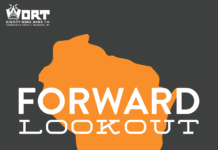The City of Madison recently did an overview of the housing programs it runs, here’s the report and my observations.Pay attention to two things. First, where does the money come from, its mostly federal money, some state. Very little city taxpayer dollars. Second, notice where the city chooses to put its money – not in rental, but homeownership. In fact, city funding goes to help with an average of 2 loans per year for rental and its not targeted at truly affordable levels (people pay 30% of their income towards housing), but for people who can afford homes. No wonder we have a rental housing crisis. HUD is cutting everything, there’s been no new initiatives except for veterans and some FUP vouchers that are severely limited to families trying to reunite.
COMMUNITY DEVELOPMENT AUTHORITY
– State chartered housing and redevelopment authority
– Reports to the CDA Board
HOUSING CHOICE VOUCHERS
– Serves low-income families, the elderly, and persons with disabilities
– Participants rent from private landlords
– 1,816 vouchers are allocated to the CDA
– Because of HUD funding constraints 1,594 in use
– Tenants pay 30% of their income
HUD funded VASH VOUCHERS
– Serves low-income veterans
– Participants rent from private landlords
– 110 vouchers are allocated
– Tenants pay 30% of their income
HUD and VA funded PROJECT BASED VOUCHERS
– Serves low-income families, the elderly, and persons with disabilities
– Vouchers get attached to specific housing units
– 137 vouchers are allocated
– Vouchers come from the Housing Choice pool
– Tenants pay 30% of their income
HUD funded PUBLIC HOUSING
– Serves low-income families, the elderly, and persons with disabilities
– Composed of apartment buildings, townhouses, duplexes, and single-family homes
– 766 Units
– Tenants pay 30% of their income
HUD funded LOW INCOME HOUSING
– Serves low-income families, the elderly, and persons with disabilities
– Composed of apartment buildings and townhouses
– 356 Units
– Some units are covered by project based vouchers from the CDA allocation
– Tenants pay 30% of their income
– HUD funded
HUD/DOE FUNDED PROGRAMS
– Overseen by the Community Development Division under the Department of Planning Community and Economic Development
– Reports to the CDBG Committee
OWNER OCCUPIED
ADDI
– Down Payment Assistance
– Deferred loan
– 6% of purchase price up to $10,000
– Averages 32 loans/year
– Income restricted to 80% of AMI
– Federal HOME funds from HUD
DEFERRED PAYMENT LOAN
– Rehabilitation Assistance
– Deferred loan
– Up to $19,000 with an additional $12,000 for lead remediation or $5,000 for energy efficiency
– Averages 15 loans/year
– Income restricted to 80% AMI
– Federal HOME and CDBG funds from HUD
GREEN MADISON
– Rehabilitation Assistance
– Cash incentive or Installment loan through lending partner
– Up to $2,500 in incentive or $15,000 loan
– Must achieve minimum energy savings
– Averages 180 projects/year
– No income or geography restrictions
– Federal Department of Energy funds
HOMEOWNERSHIP CONTRACTS
– Downpayment Assistance
– Deferred loan
– Up to $54,000
– Delivered through partner non-profits
– Averages 20 loans/year
– Income restricted to 80% AMI
– Federal HOME and CDBG funds from HUD
REHABILIATION CONTRACTS
– Rehabilitation Assistance
– Loans, grants, and contracts
– Delivered through partner non-profits
– Averages 200 projects/year
– Income restricted to 80% AMI
– Federal HOME and CDBG funds from HUD
RENTAL
ACQUISTION/CONSTRUCTION CONTRACTS
– Acquisition/Construction Assistance
– Loans, grants, and contracts
– Delivered through partner non-profits
– Averages 30 units/year
– Typically income restricted to 50% AMI
– Federal HOME and CDBG funds from HUD
REHABILITATION CONTRACTS
– Rehabilitation Assistance
– Loans, grants, and contracts
– Delivered through partner non-profits
– Averages 100 units/year
– Typically income restricted to 50% AMI
– Federal HOME and CDBG funds from HUD
CITY OF MADISON FUNDED PROGRAMS
– Overseen by the CDA and Economic Development Division under the Department of Planning Community and Economic Development
– Reports to the CDA Board
OWNER OCCUPIED
HOME BUY
– Down Payment and Closing Cost Assistance
– Deferred Loan
– Up to $5,000 with an additional $5,000 for residents with income under 50% of AMI
– Averages 50 loans/year
– Income restricted to 80% of AMI
– State HCRI funds w/ some City matching funds
HOME BUYER’S ASSISTANCE
– Combined Down Payment and Rehabilitation Assistance
– Deferred or installment loan
– Up to $40,000 with an additional $10,000/unit
– Averages 6 loans/year
– Income restricted to $101,125
– City funds
SMALL CAP TIF
– Combined Down Payment and Rehabilitation Assistance
– Forgivable loan
– Up to $60,000 with an addition $10,000/ unit
– Averages 2 loans/year
– Geographically restricted to relevant TID
– TIF funds
INSTALLMENT LOAN
– Rehabilitation Assistance
– Installment loan
– Up to $19,000 with an additional $3,000 for each housing unit
– Averages 11 loans/year
– Income restricted to $129,250
– City funds
RENTAL
RENTAL REHAB
– Rehabilitation Assistance
– Installment loan
– Up to $19,000 with an additional $3,000 for each housing unit
– Averages 2 loans/year
– 75% of units must be income restricted to 80% AMI
– City funds







